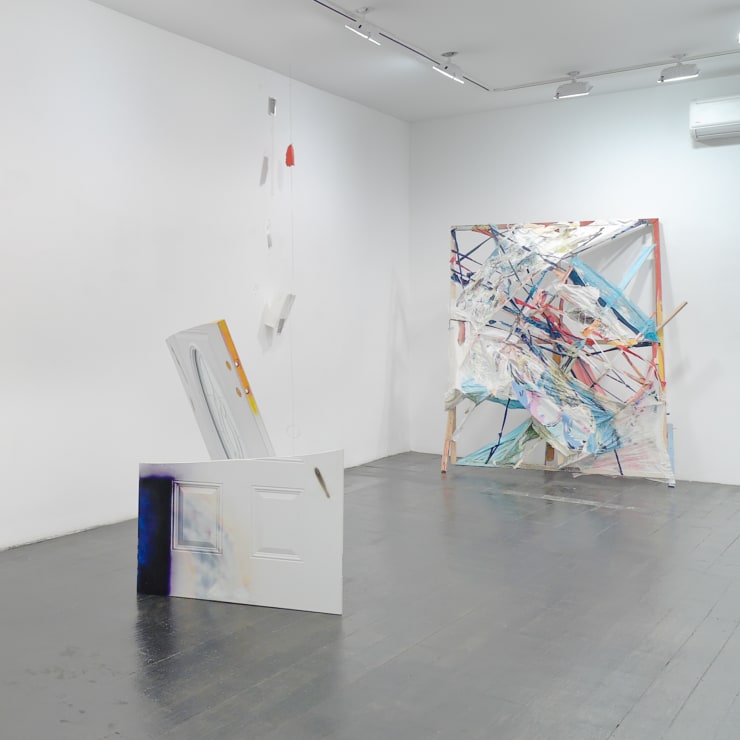Oculus Imaginationis
Sara Braman, Leidy Churchman, Andy Coolquitt, Keltie Ferris, Lauren Luloff, Michael Jones McKean & Jacob Robichaux
The term "oculus imaginationis" was coined by the esoteric 17th century physician Robert Fludd, who thought the "eye of the imagination" did not receive images, but projected them onto a screen "beyond the back of the head", a floating space that exists only in fantasy. Artists have persistently sought access to the universe of pure imagination and today, are armed with an array of tools to materialize what is physically unreal. Borrowing from the factual world to express this subjective vision might be the longest standing tradition in art and yet, the question bears repeating: With what does the inner eye think?
To answer such a question, the artists in "Oculus Imaginationis" have responded with a modesty that is unashamedly attractive, realistic, unpretentious and hopeful. With an acceptance that abstraction is the end result when filtering an image into the world, these artists imply that any representation may be provisional. For Sarah Braman, this abstraction reveals itself in scraps of plywood, Plexiglas, cardboard and other materials that feel discarded or found, yet are ingeniously adapted and slightly modified. This makeshift quality is echoed in Jacob Robichaux, where string, straws, staples and other crafty items retain their distinctiveness; yet appear symbolic of a sequence of intuitive visualizations. Leidy Churchman's "Painting Treatments" use common materials to apply paint to a man lying on his stomach, finding new meaning within subjective abstract painting.
Other artists in the exhibition utilize objects that come with a cultural or personal residue.Lauren Luloff's bed sheets feel stained with history. She literally, and metaphorically, wrestles with this history, projecting upon these artifacts where paint attempts to replace memory. Michael Jones McKean's remakes historical objects, re-imagining them through a series of impossible juxtapositions, finding a balance between his own fantasy and the remains of cultural debris. Andy Coolquitt lights create a full circuit when each end glows, yet one quickly realizes this path, the completion of energy, is filtered through the delicate manipulations of the artist. Lastly, Keltie Ferris's paintings are akin to archeology. While her abstractions may be representative of generational shifts with the medium, her process of spraying and painting propose that each layer is yet another projection, each expression being partially obliterated to accommodate the next fantasy.


